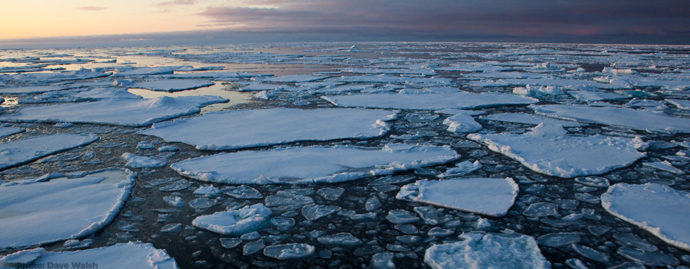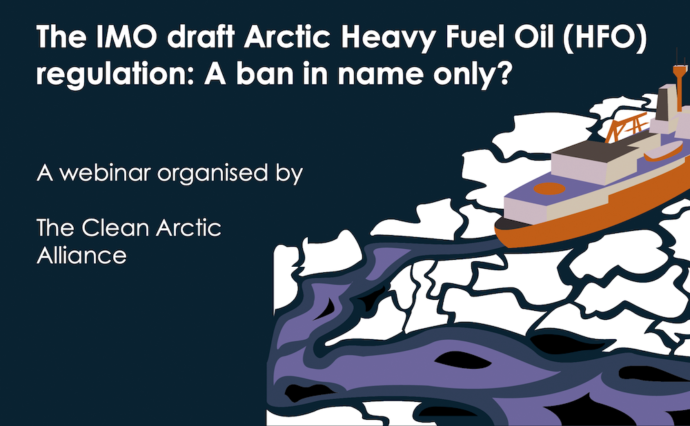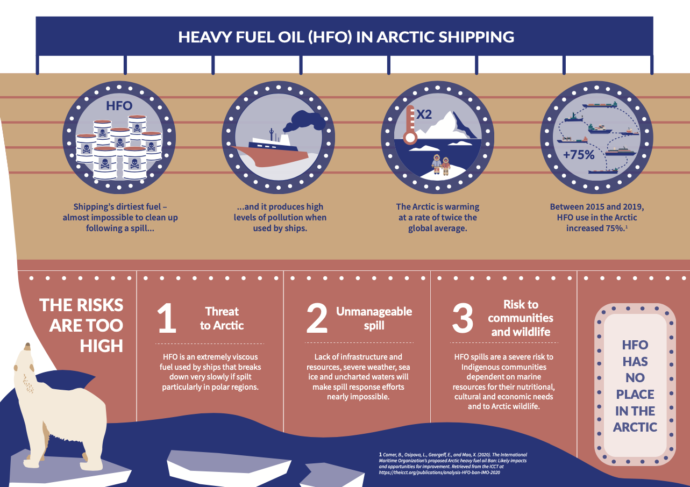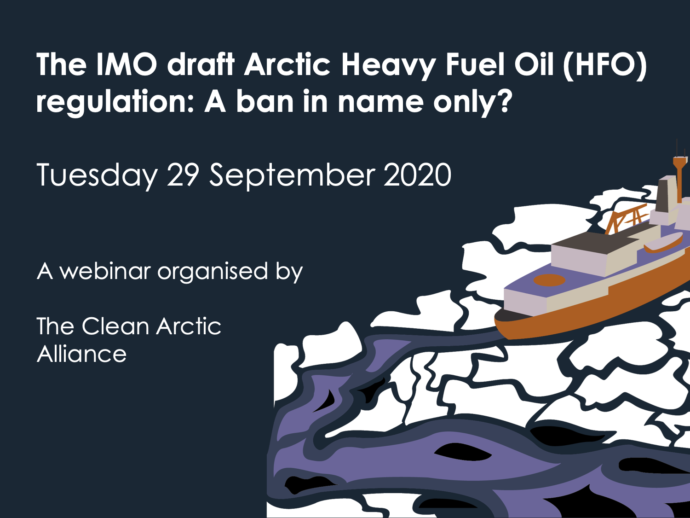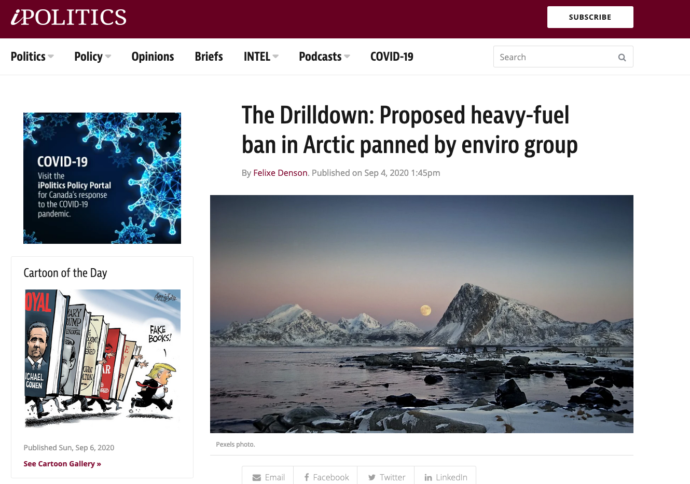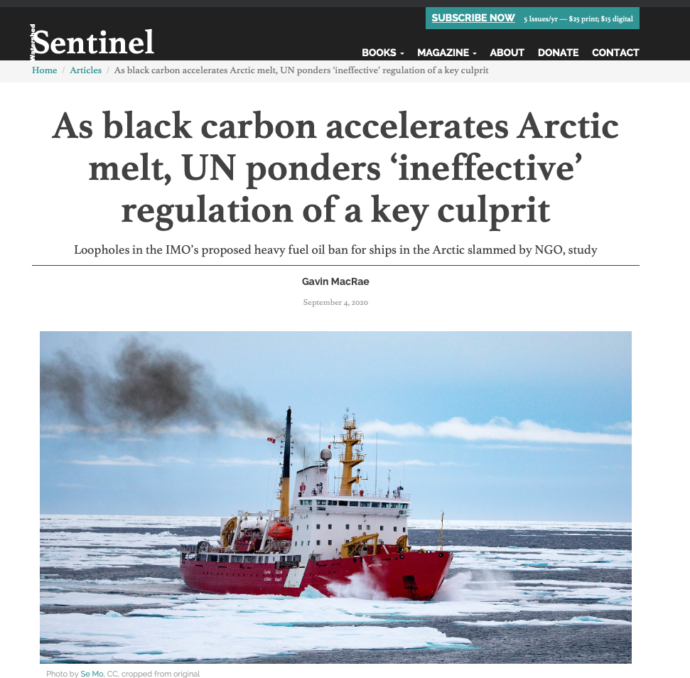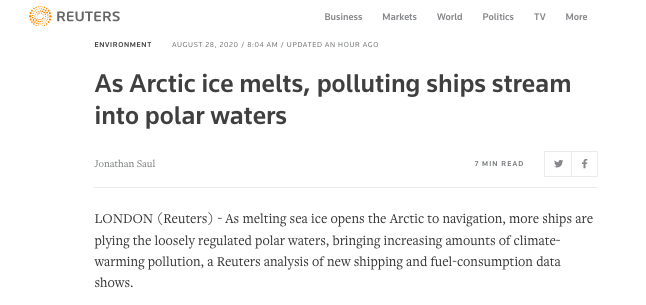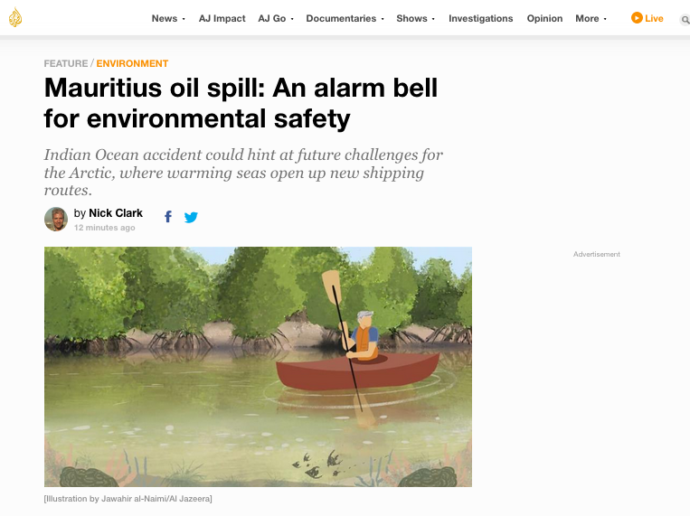Arctic Sea Ice Crisis: World Leaders Must Cut Emissions to Curb Arctic Heating
Responding to reports that the annual freeze of the Laptev Sea is delayed, and is being driven by prolonged heat in northern Russia and the intrusion of Atlantic waters into the Arctic, the Clean Arctic Alliance reiterated its call to world leaders to take urgent action to slow Arctic heating ahead of this month meeting of the International Maritime Organization’s Marine Environment Protection Committee (MEPC 75), calling for at least a 60% global greenhouse gas emissions, and a 90% cut to black carbon emissions in the Arctic.

